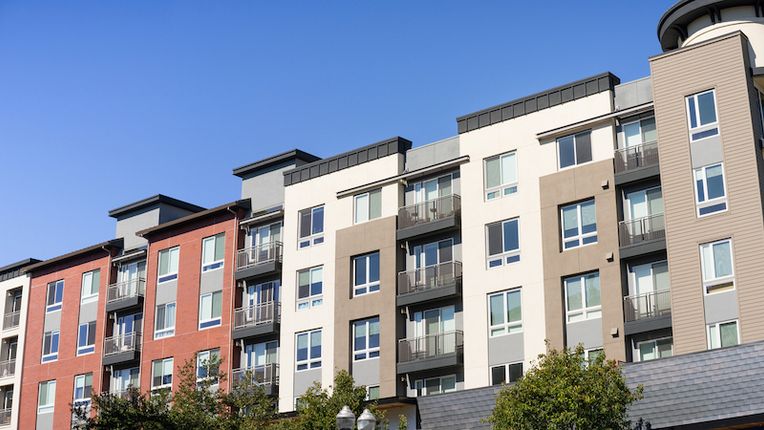A new study commissioned by the Property Council of Australia shows levelling the investment playing field for build-to-rent homes could deliver 150,000 new apartments and help address Australia’s stark housing affordability challenges.
The study by EY, released a month ahead of the Federal Budget, shows a level investment playing field for build-to-rent developments could create 150,000 rental homes over 10 years, significantly helping the Australian Government hit its ambitious one million homes housing target by 2029, and significantly easing pressures in the rental market.
The report also shows build-to-rent housing, which is relatively new to the Australian residential market, is currently worth $16.8 billion but has the potential to expand by a factor of 17, to a $290 billion sector, which would see the creation of up to 350,000 new apartments in an optimistic scenario.
Property Council of Australia Chief Executive Mike Zorbas said build-to-rent housing is the missing ingredient in Australia’s housing mix.
“With a 79,300-home deficit to 2033, Australia needs better planning, more land supply, proper housing targets and a national strategy on build-to-rent and purpose-built student accommodation,” Mr Zorbas said.
“The potential to create 150,000 homes over the next 10 years with just one asset class shows build-to-rent is about as close to a housing policy silver bullet as they come.
“Australia is grappling with a worsening housing affordability crisis where state governments miss their housing targets and planning systems fail to keep up.
“To offer more housing choices and affordable options to Australians, we need to tap into institutional investment in build-to-rent housing from Australia and abroad.
“More supply means downward pressure on the cost of renting and buying, and people who live in build-to-rent housing will enjoy the benefits of professionally managed properties, good locations, superior amenities and long-term security of tenure,” he said.
The first-of-its-kind report found equalizing the tax regime for managed investment trusts with other institutional asset classes would efficiently increase Australia’s housing supply and help those pioneers already establishing the build-to-rent sector in Australia.
According to high-level financial modelling undertaken as part of the study, if the managed investment trust withholding tax was halved to 15 per cent, in line with other property asset classes, three times as many build-to-rent projects would go ahead compared to a business-as-usual approach. The Australian Government would also receive a 30 per cent increase in tax receipts over a 10-year period.
Compared to other countries, Australia’s build-to-rent market is new and small.
EY estimates that the current size of the build-to-rent sector in Australia is $16.87 billion (just 0.2 per cent of the total value of the residential housing sector) with only 11 operating build-to-rent projects, and another 72 projects in the pipeline. The report suggests on conservative estimates, if the sector grew to just 3 per cent of Australia’s residential stock, it could be worth $290 billion.
In the US there are more than 20 million build-to-rent housing units, representing 12 per cent of the country’s total housing stock. In the UK, the build-to-rent sector has grown exponentially in recent years from 47,000 units in 2016 to over 240,000 in 2022.
“The growth of build-to-rent in the UK and US has been strongly supported by governments at all levels welcoming institutional investment,” Mr Zorbas said.
The report makes five key recommendations including applying a 15 per cent managed investment trust withholding tax rate for foreign investors, a 10 per cent rate for affordable housing, allowing institutions to claim GST, promoting the sector, and addressing the regulatory barriers for domestic superfund investors.
“It’s critical that investments in build-to-rent housing need to be eligible for the 15 per cent withholding tax rate, and an incentivised tax rate of 10 per cent for investors that choose to incorporate the supply of affordable housing dwellings within their build-to-rent projects,” Mr Zorbas said.
“To accomplish the ambitious goals established in the national Housing Accord, the government needs to level the build-to-rent investment playing field in the May 2023 Budget,” he said.


